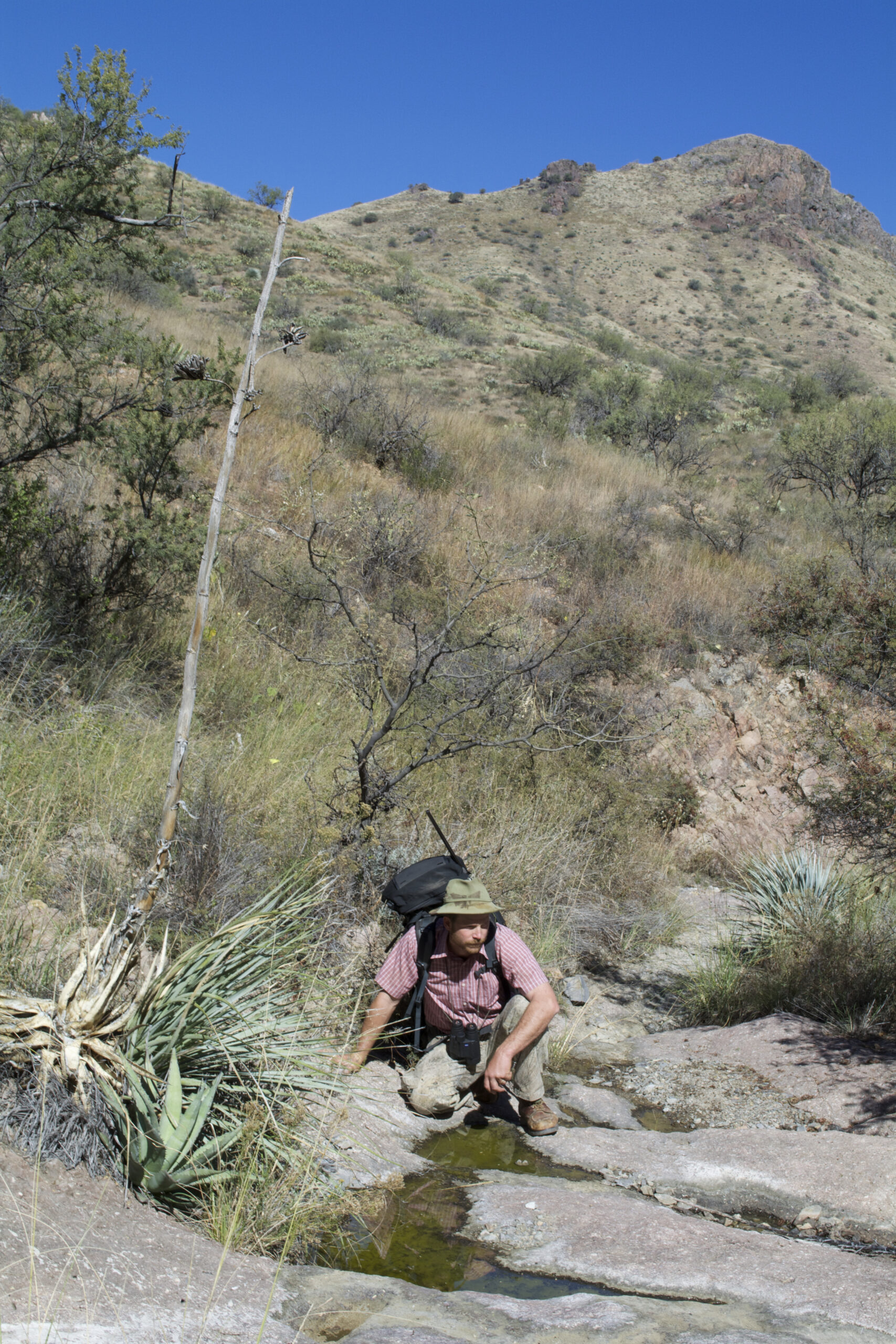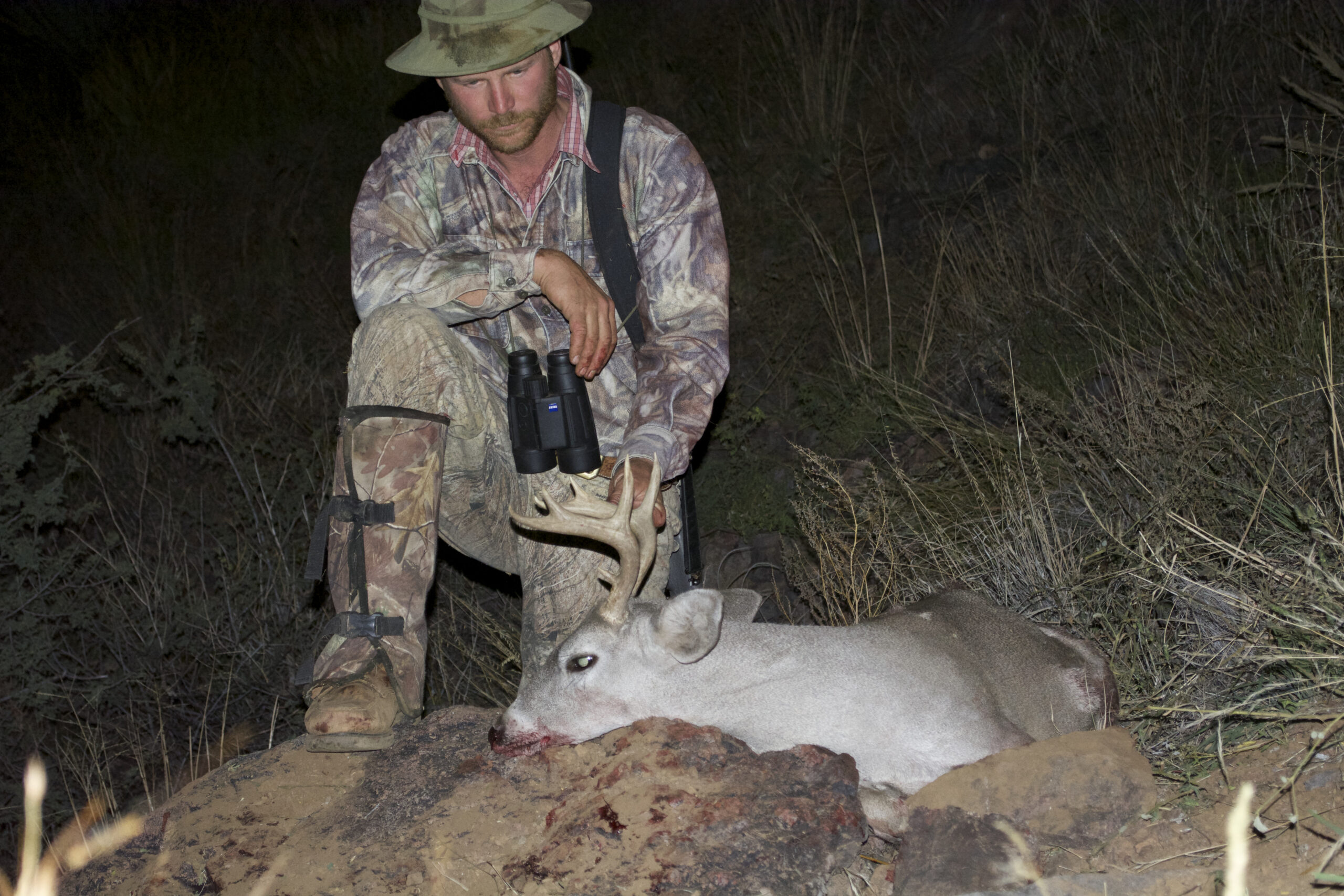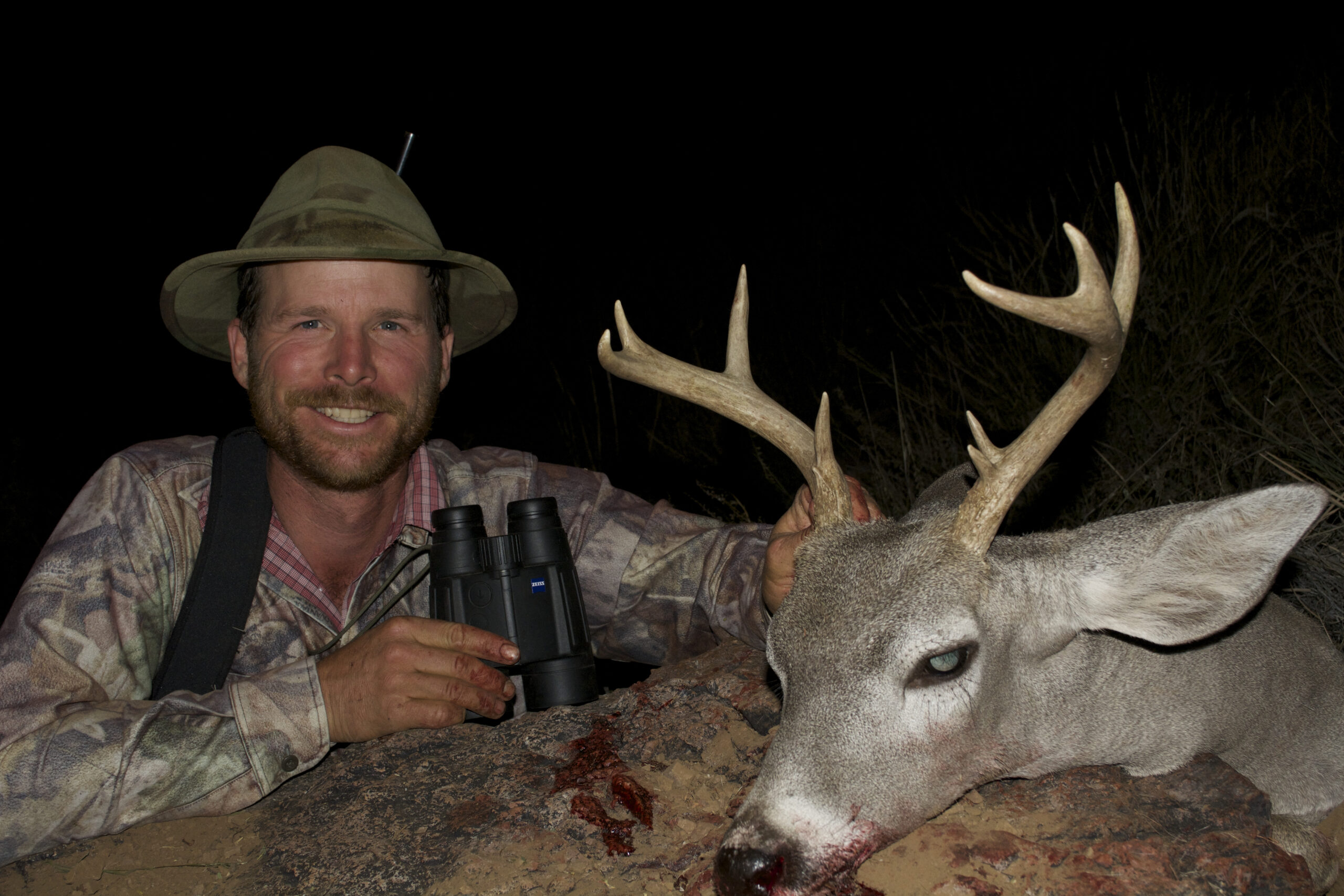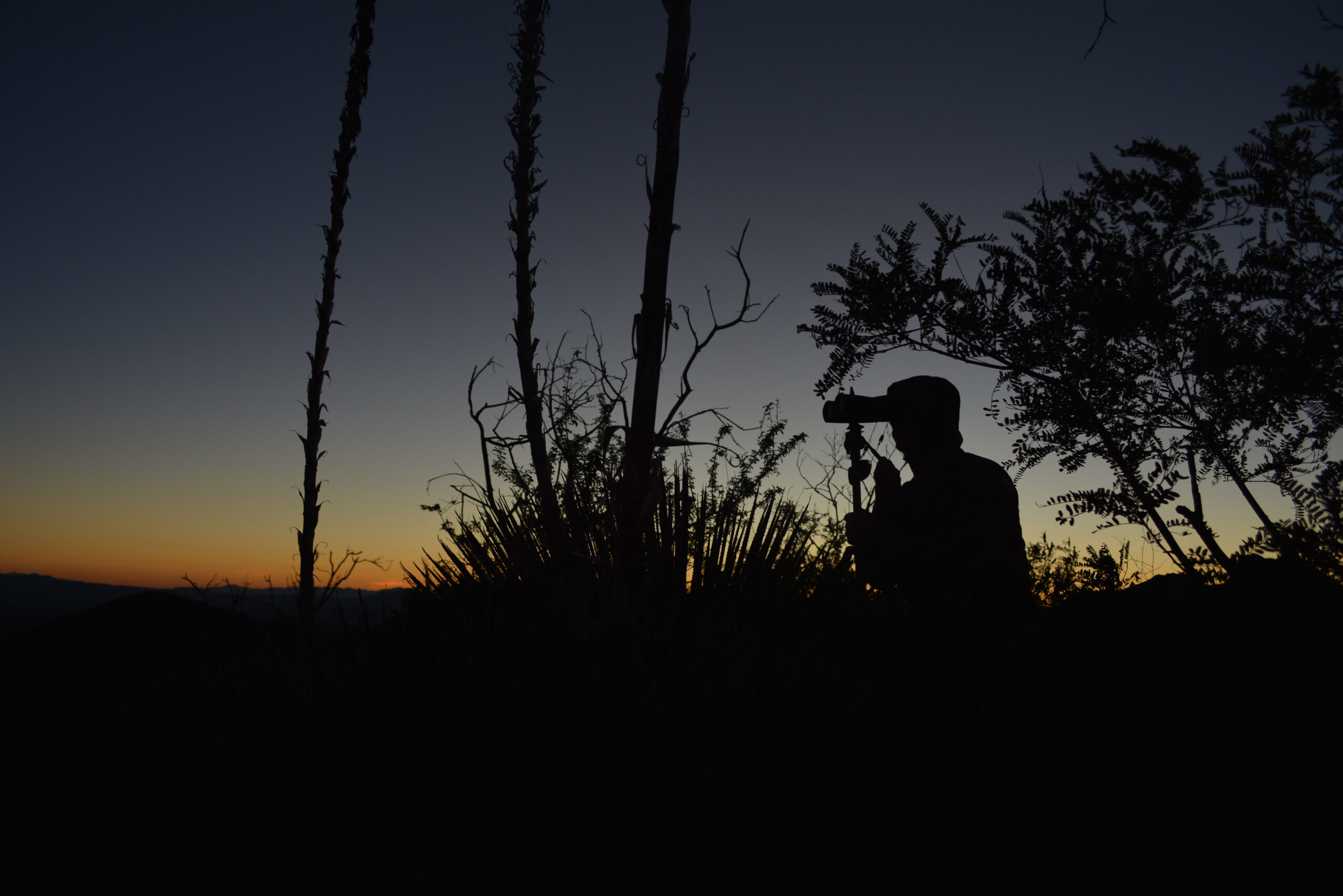
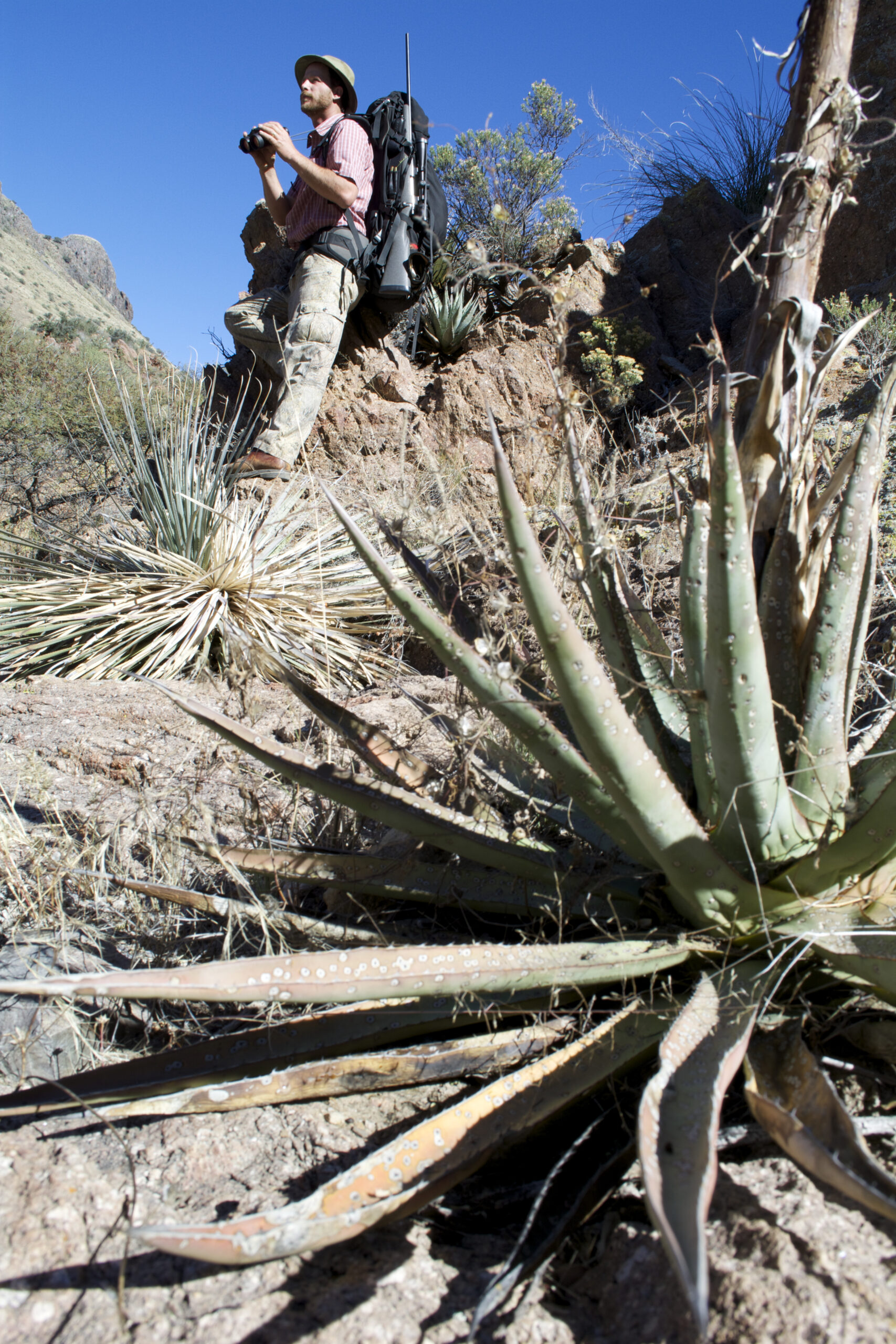
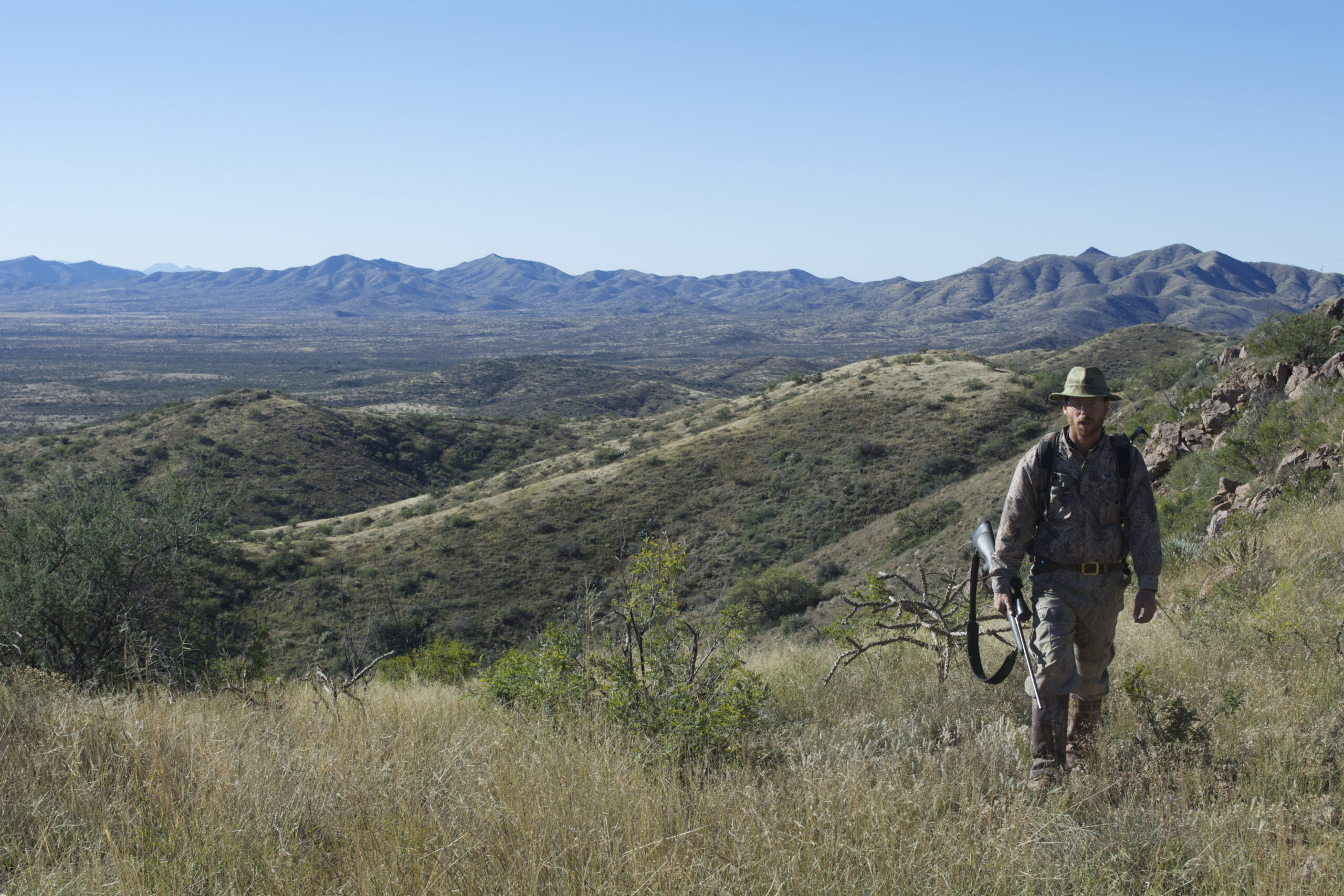
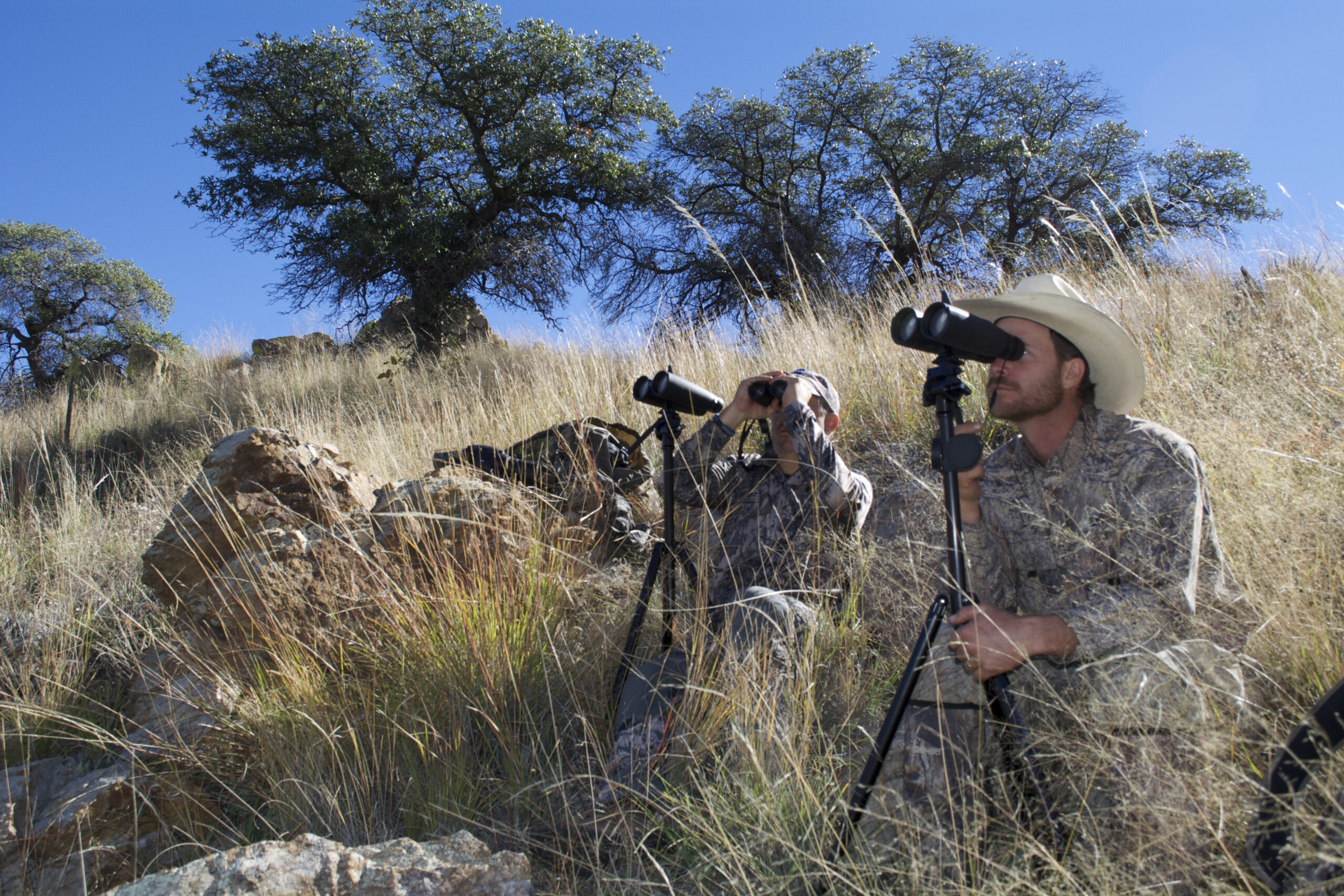
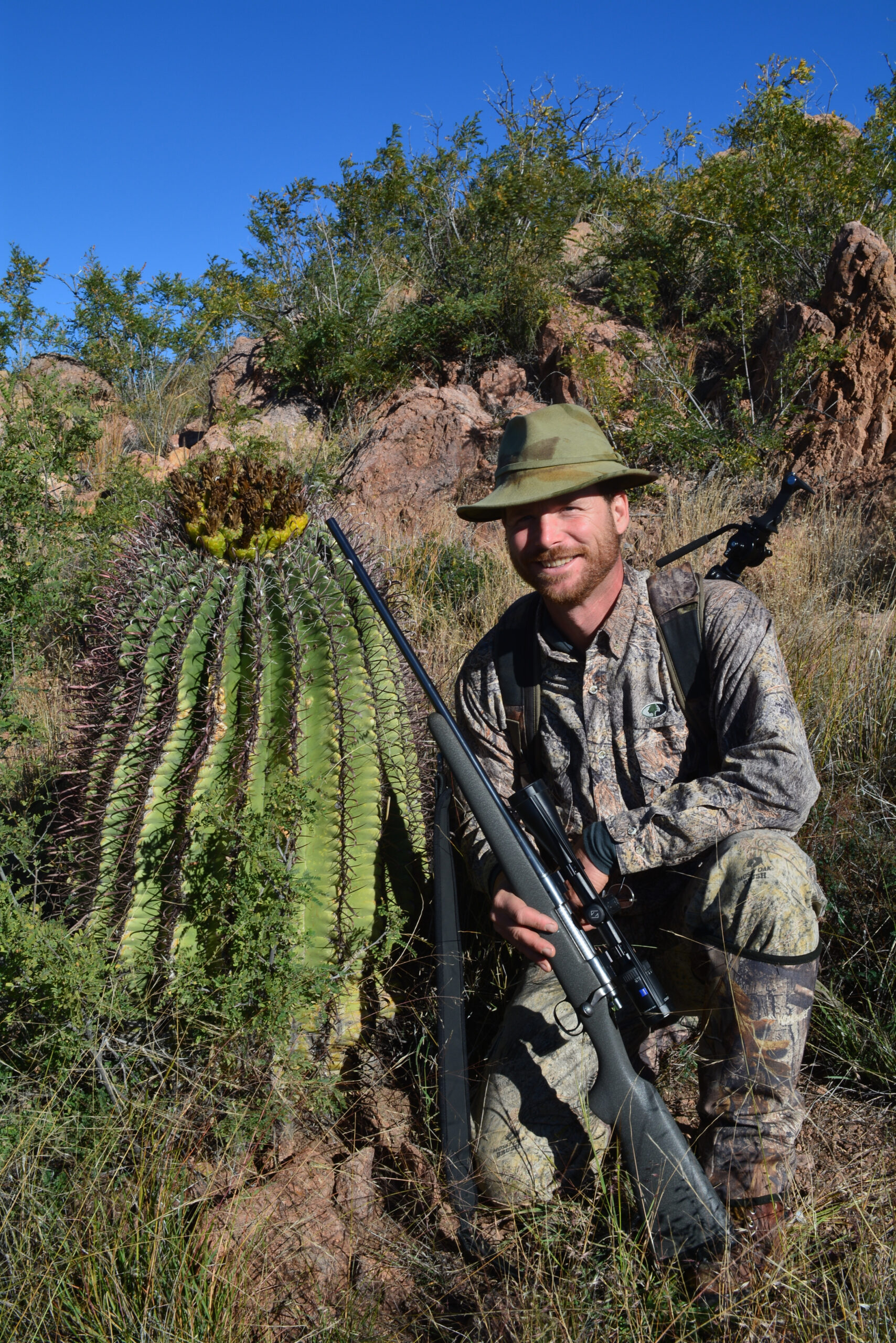
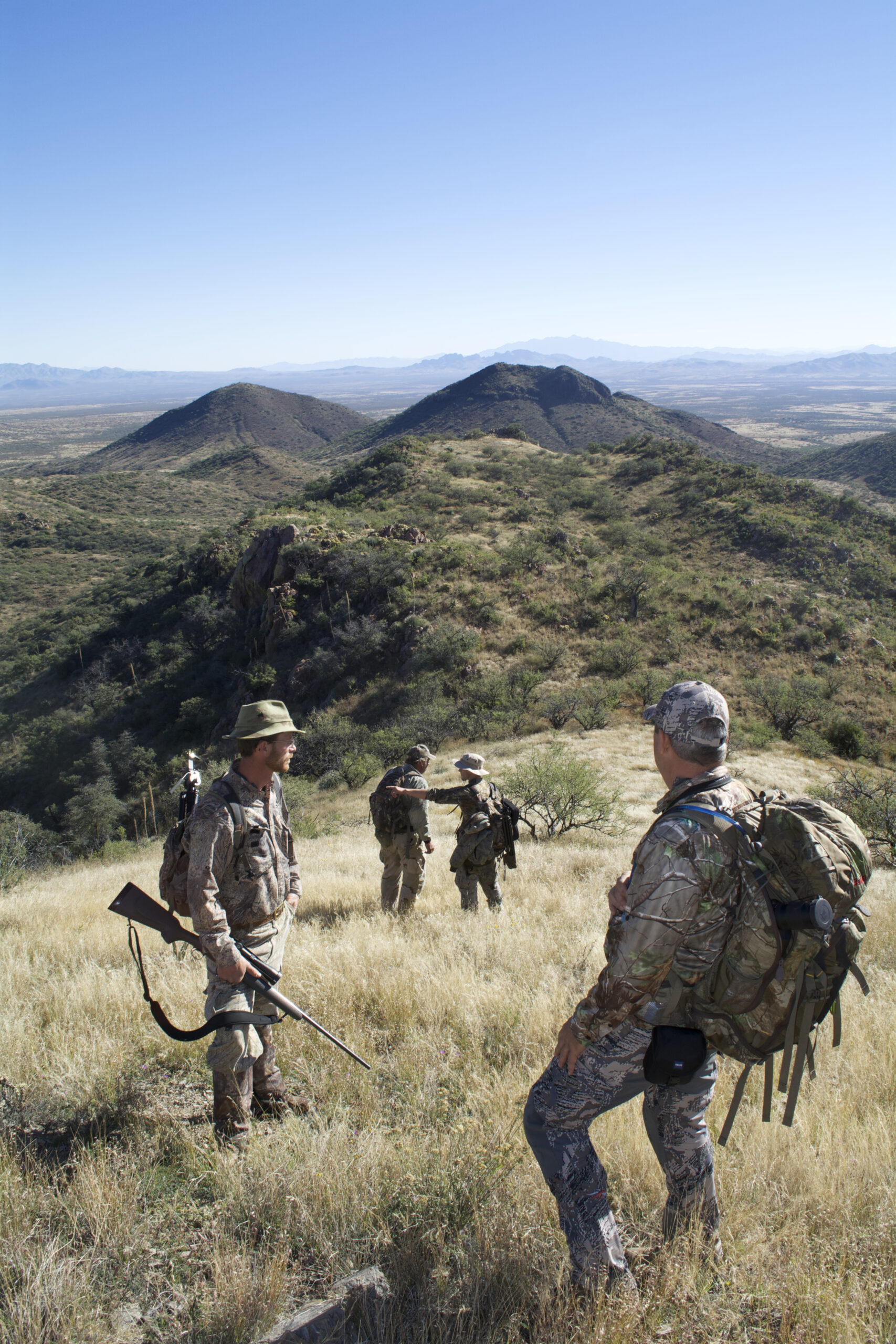
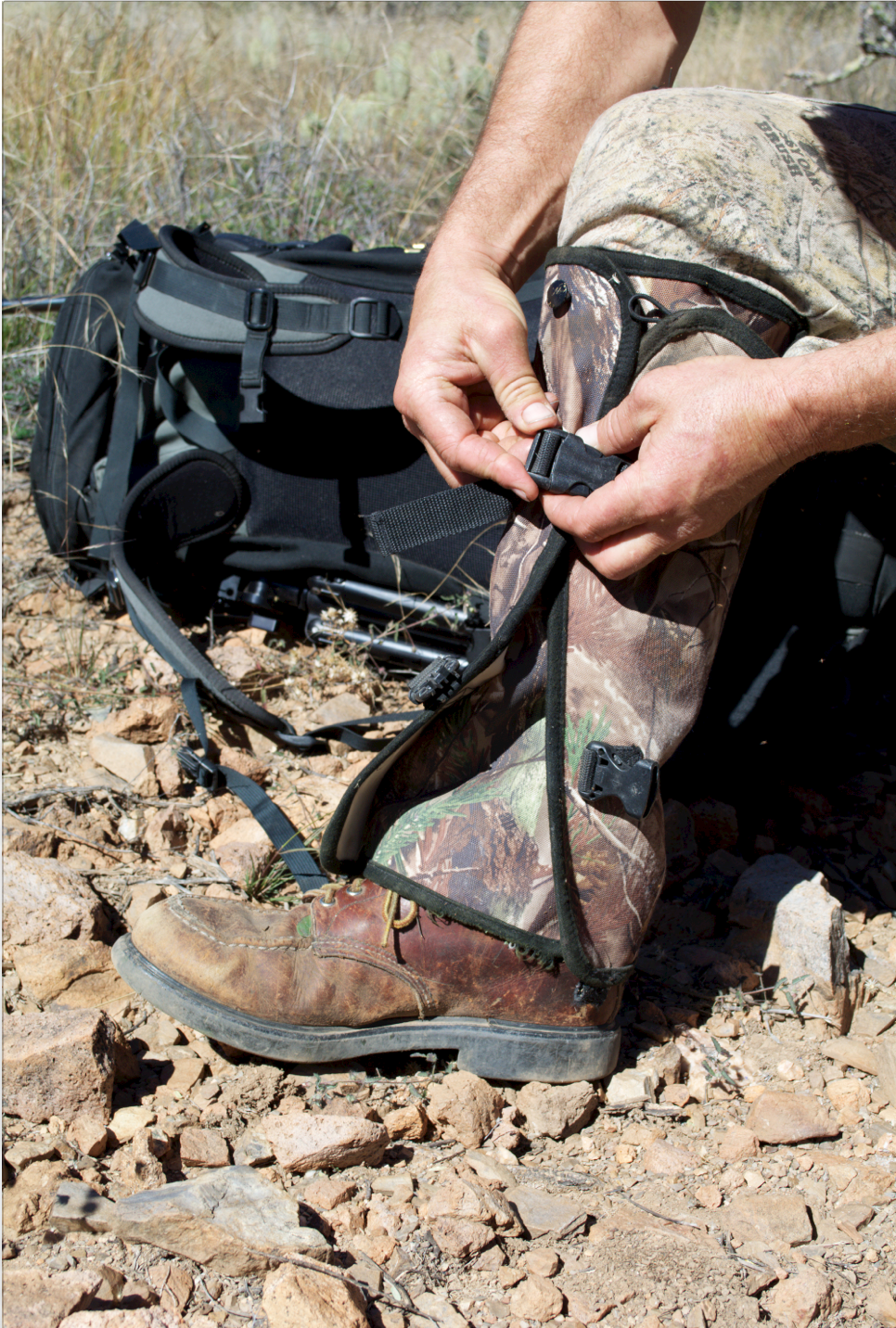
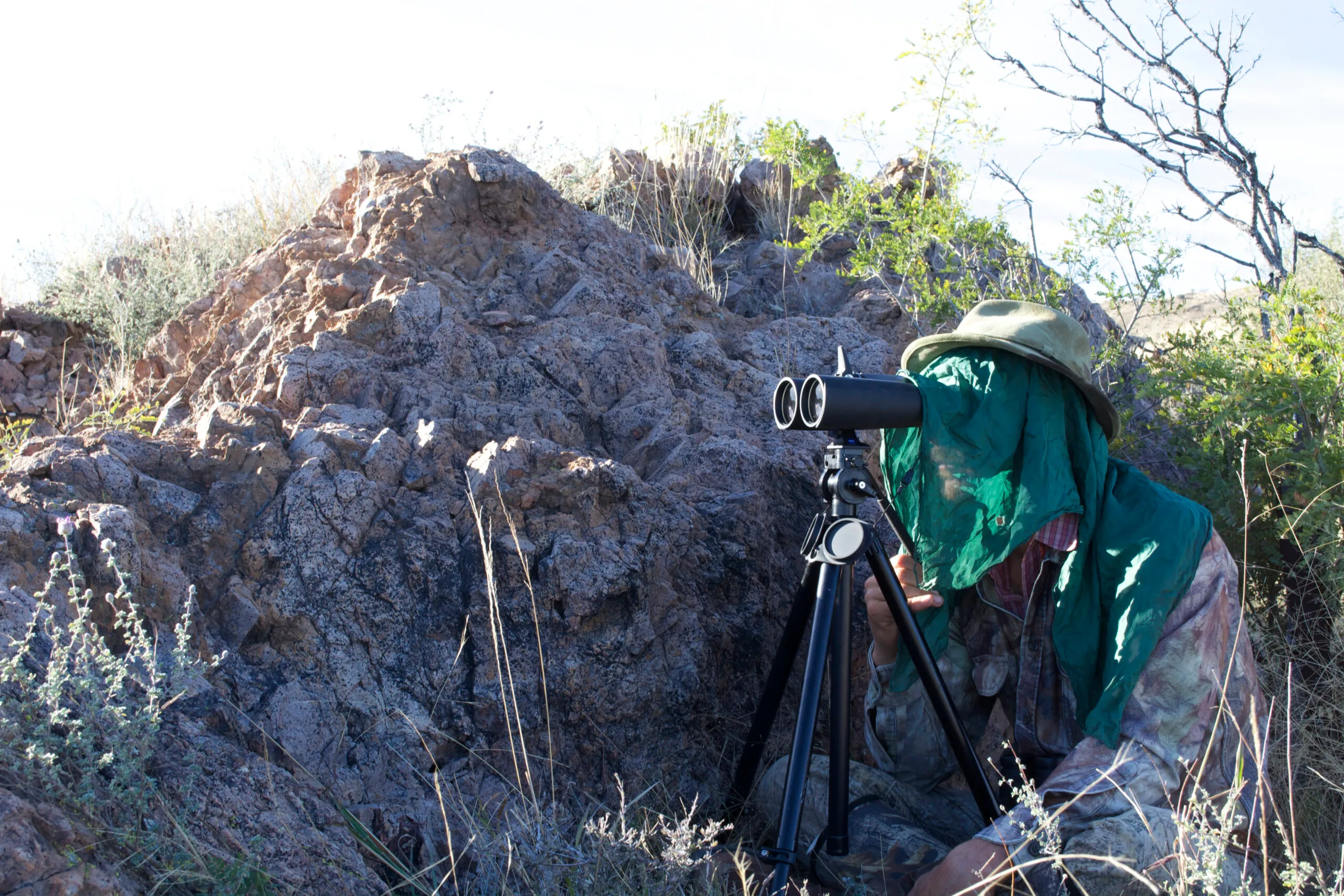
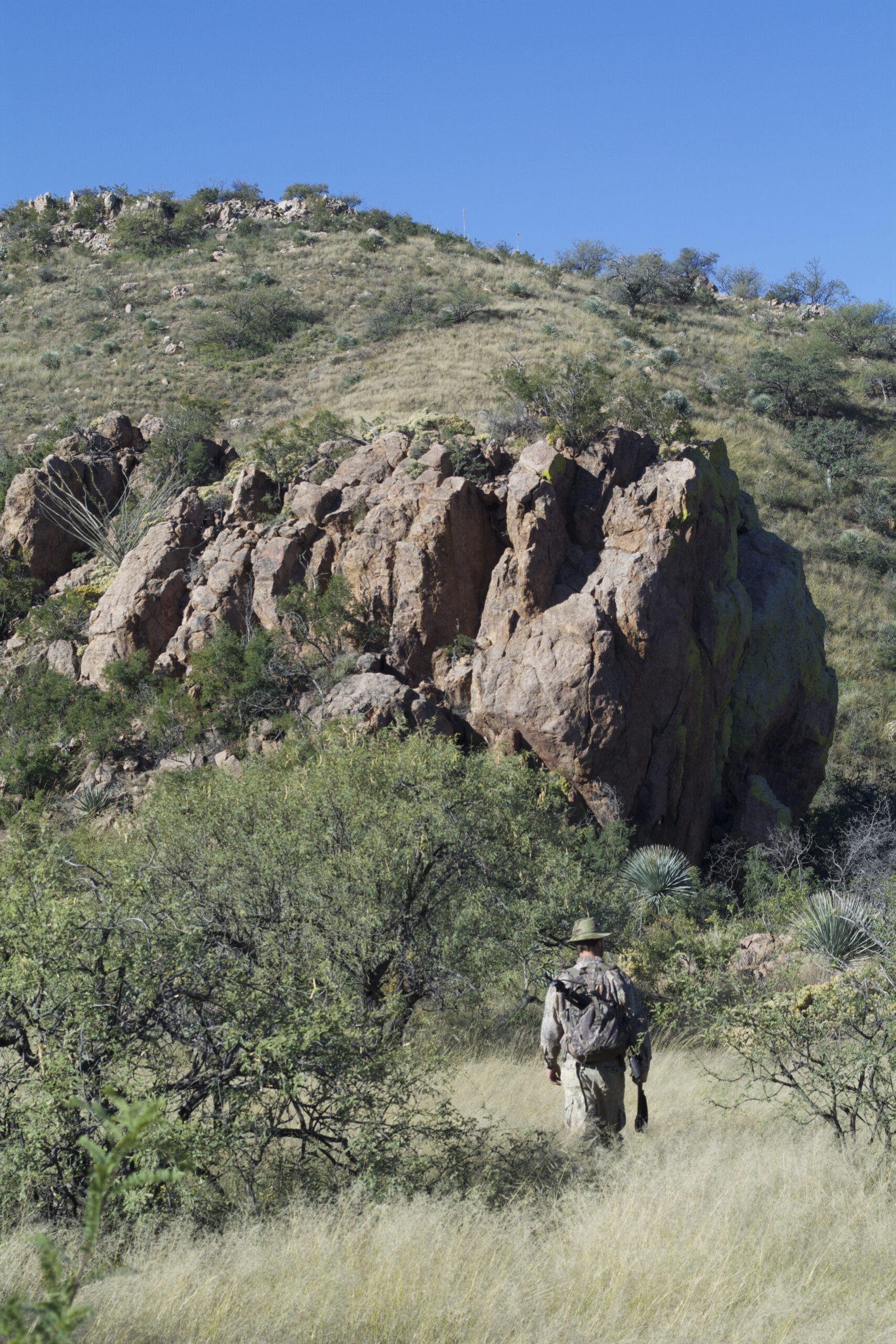
My friends and I had an outfitter pack camp several miles into a no-vehicle-access area for us. This cost a bit but saved us hours of backpacking water and food into the backcountry on our, well, backs. We did bivy out overnight some, but having a comfortable camp to base our hunting from was a great addition to the hunt that helped keep us fresh and motivated. Another very effective method is to carry your camp on your back wherever you go. I’ve done this on many hunts and it’s an extremely efficient method. Finding adequate drinking water can be the biggest challenge, but a little research, scouting, and preparation should take care of that issue.
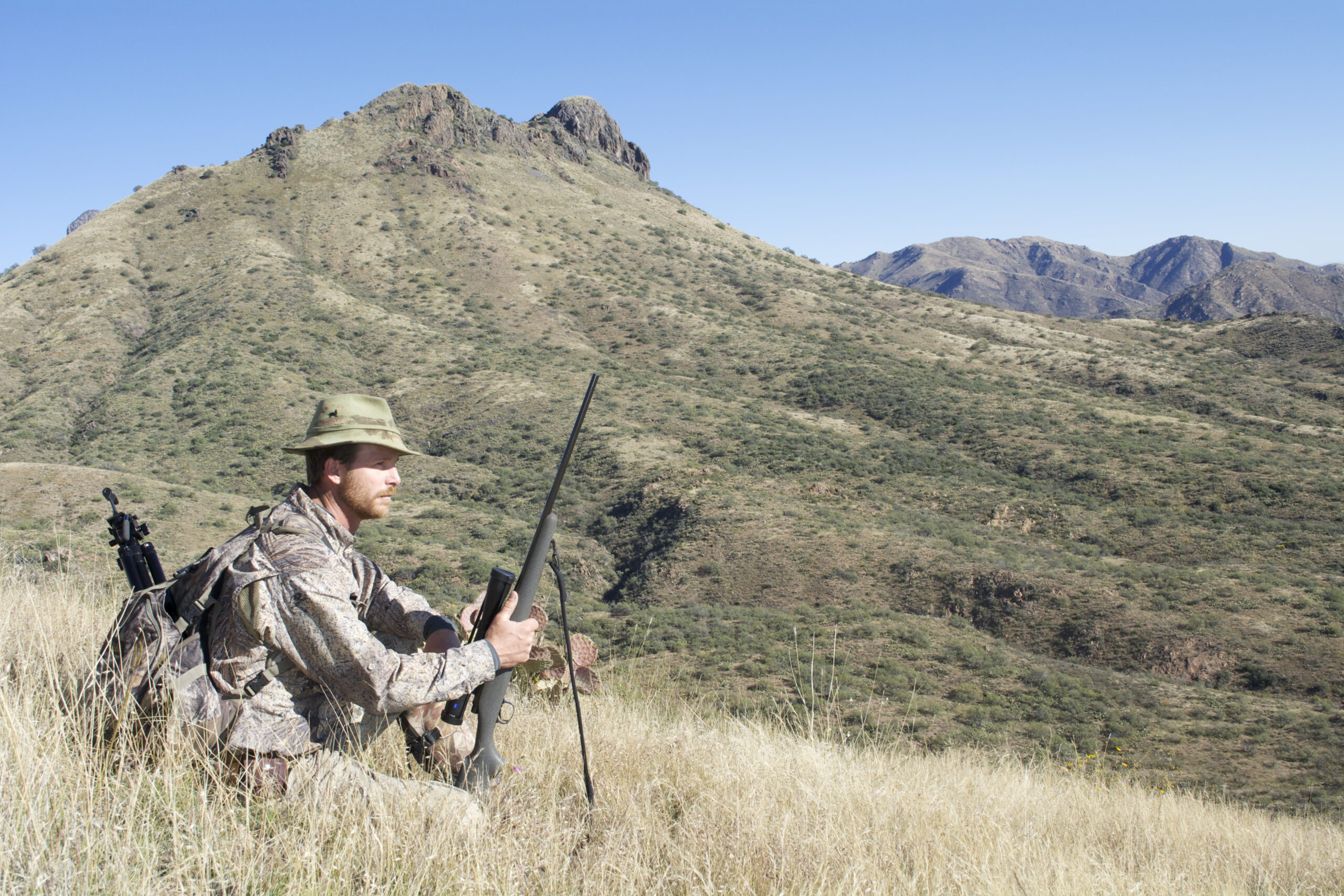
When you've trekked into an area that you expect to hold deer, seek out a good vantage point. Be sure to set up in or under cover and avoid sky-lining yourself. Move very carefully: these little grey deer don't tolerate pressure well. If you make a mistake, they may slip away from the area and you'll never even know they were there. Glass and glass, and then glass some more. Early in the season look for bucks in secluded and unlikely places. My buck was bedded under the high cliffs that form the peak in this photo. Look for groups of does later during the rut and you'll find the bucks that shadow them. Once you spot a shooter buck, assess the terrain carefully and plan a stalk. Close the distance as rapidly as you can, utilizing every bit of available cover. Try to get as close as possible. These deer are much smaller than their whitetail relatives and deserve precise shooting. But be prepared for longer shots if need be. The landscape often dictates shot distance.
